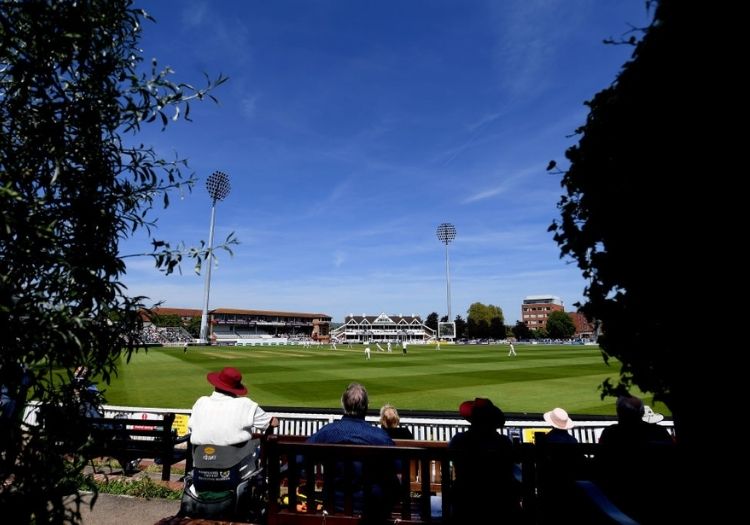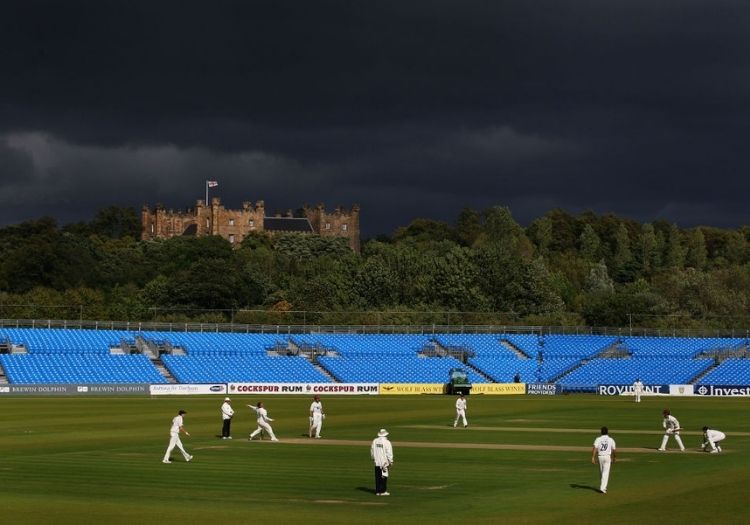HUWZAT ON WEDNESDAY: How did we get to the point six years ago where the ECB actually had to pay people – about £500,000 over that period – to write about their own competitions, when the Press Association pulled out six years ago?

We know people want to watch county cricket. About 1.5m saw the streaming of the Bob Willis Trophy final. So why is it becoming increasingly difficult to find places to read about it?
And I don’t mean people writing about it sitting in an office. I mean people actually there. In the flesh. With their keyboard. Flask. Pencil case and pad. Wine gums. Oh, is that just me?
Of course readers of the broadsheets have known for some time that sports editors prefer Premier League football at the expense of everything else, slashing the number of pages devoted to even the ‘other two’ of the ‘Big Three’: cricket and rugby union... although international coverage of each remains strong.
Now another body blow has been dealt to coverage of county cricket.
Since 2014 the ECB has paid for a team of about 20 journalists at each of the first-class counties – the Reporters Network – to produce impartial reports which are then sent free to media outlets including our website, ESPNcricinfo and the BBC.
With the ECB saying they must lose 62 jobs in the face of a £106m deficit, though, they believe they must cut those contracted to six. Every game of men’s and women’s cricket will still be covered, the ECB says, but by reporters watching on the telly.
So what, some people may ask?
Well, you can’t actually beat being there.
Otherwise you are a slave to what you are being shown. Pre-Covid, reporters could actually go and talk to people. Find out things. See what is going on behind the scenes. Yes it may suit some clubs and authorities to control the message, but that defies all the ethics of journalism. This isn’t Pravda!
At least with streaming they can see what was going on, I suppose. All too many have being writing reports just from scorecards in the last few years.

We’ve had instances of batsmen being ‘trapped plumb lbw’ – actually the umpire, a Mr JQ Magoo, had a shocker and it was missing a second set; or batsmen being ‘clean bowled’ – when the ball dribbled on to the stumps and a bail dropped apologetically off. And so on.
But still… it’s not the same.
How have we got to this point?
Actually how did we get to the point six years ago where the ECB actually had to pay people – about £500,000 over that period – to write about their own competitions, when the Press Association pulled out?
Does the governing body have to take some responsibility for allowing them to become so unattractive?
The Telegraph and Times used to have a reporter at every match. Now the former maybe covers one, the latter three. Why pay somebody £100 to sit at the cricket – yes, it was reduced to that little – when they can sit in an office and crash out footy stories, the bean-counters no doubt ask?
Stan Chion has turned down a move to Rovers. Billy Ballbag wants £300,000 a week at City. These stories go out in print then get the global hits online. It’s a numbers game. Those behemoth papers pride themselves on saving upwards of £1,000 per day. But what’s wrong with variety? When I started at a broadsheet in 2000 about a quarter of the sports section covered football. When I left in 2015 it was half. A lot of people miss the eclectic coverage.
Perhaps not everyone agrees with me. The Telegraph won an award for Outstanding Newspaper Coverage of Domestic Cricket in the 2019 Domestic Cricket Awards after all.
Their former chief political commentator, the hugely respected Peter Oborne, is sad about the diminution of county coverage, though.

“The Telegraph, the paper of Middle England, had this amazing network of county writers and local reporters who really knew their subject,” he told me. “It was dismantled to make way for big-name columnists like Kevin Pietersen – there is nobody who less embodies what the Telegraph represents.
“The coverage of cricket in the Daily Telegraph was the soul of the game, with a wonderful tradition: EW Swanton, Christopher Martin-Jenkins, Derek Pringle and Scyld Berry. It was the ultimate paper for cricket lovers. Yes they still have some good writers but the loss of its county network is heartbreaking. I don’t understand it: the County Championship is a bloody marvellous competition and nobody understands that more than Telegraph readers.”
It would be a lie to say all county reporting has been brilliant over the decades.
There is definitely a gulf between reporters who go out and seek stories and one or two who just sat there watching the play. Most acknowledge that reports consisting purely of lines like ‘Rogers eased one through the covers in the third over’ don’t crack it on the entertainment scale anymore.
One needs an incentive anyhow: if the news editor gives you an order for 150 words, after several decades, it is demoralising.
Ah yes, news editors. Football-mad most of them. Some of them didn’t know their Azhar from their Elgar. I remember telling a sports editor once about the 15-degree limit for the elbow extension of bowlers after the Muttiah Muralitharan brouhaha and he looked at me as if I was Sherlock Holmes.
But actually it is elementary: county cricket coverage by impartial reporters, on the ground. Something must be done.
Posted by James on 28/04/2024 at 07:12
I find myself agreeing with every word you wore, I started watching cricket when I left school in the early 70s I'd watch what the old boys were reading in the lunch interval and The Daily Telegraph was the clear favourite, I worked for WHS so I had free access to all the dailies, The Times and The Guardian also had good coverage but none could rival The Telegraph for its coverage of everything from test cricket right down to village and schools level and even covered women's cricket before it became popular. So yes I do miss the quality of the writing that is sadly no more but I guess the internet is mostly to blame as newspaper circulation is in deep decline. I also miss going to outground cricket as we have lost so many over the years to financial constraints but I guess they call it progress!